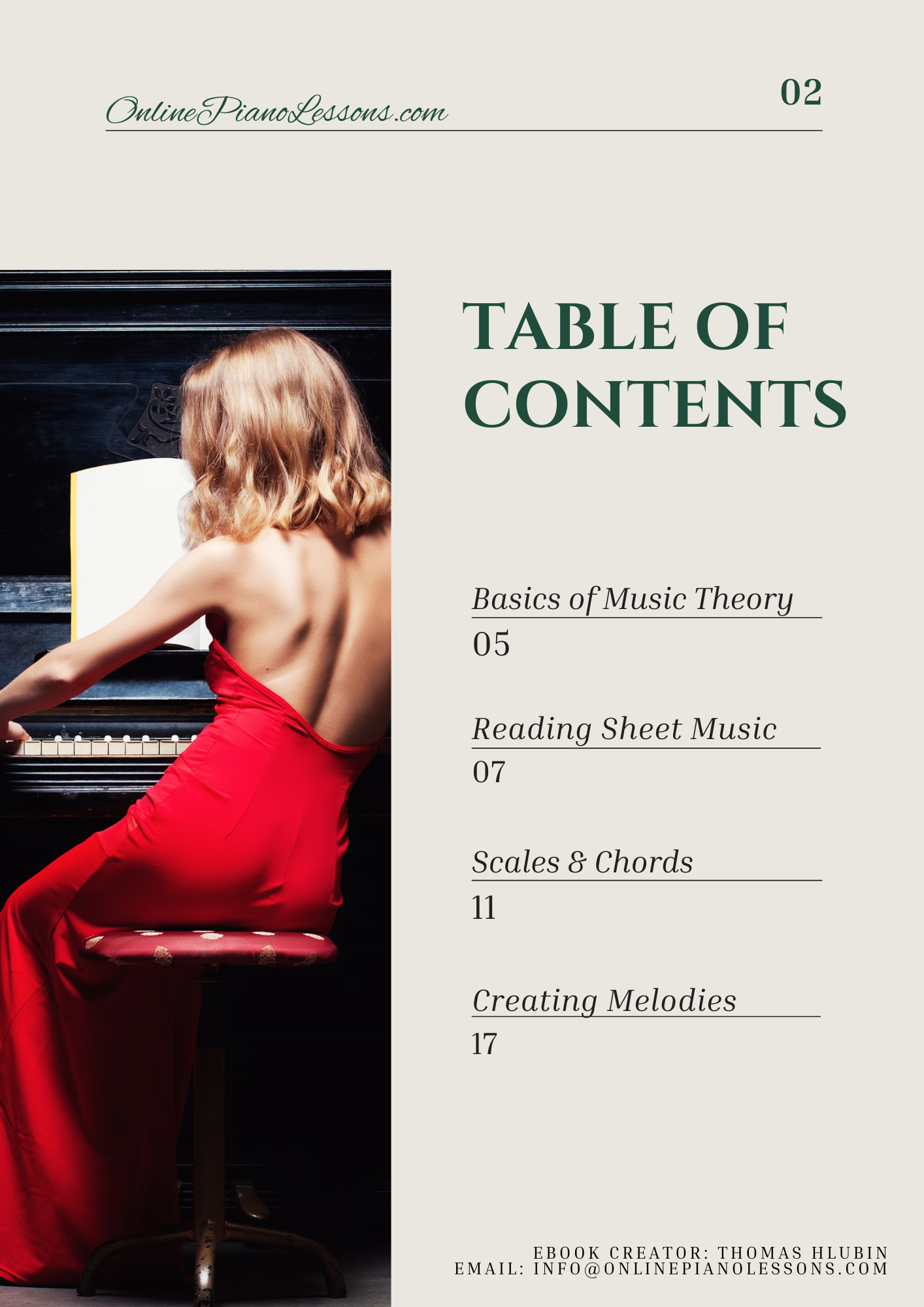If you’ve ever listened to a piece of music that sounded dark, exotic, and full of tension, chances are you’ve heard the Phrygian scale in action. This ancient mode has roots in early Greek music theory, and it continues to appear across modern genres like metal, film scores, and world music. In this guide, we’ll break down exactly what the Phrygian scales are, how they work on the piano, and how you can use them to create emotionally charged and distinctive music.
Quick Preview: Step into the mysterious world of Phrygian scales on the piano and uncover their dark, exotic, and emotional sound. This guide explains what makes a scale Phrygian, how it’s built, and how to use it to create dramatic and expressive music. You’ll learn the notes, intervals, and theory behind the Phrygian mode, how to play it across the keyboard, and why it’s favored in genres like flamenco, metal, and cinematic music. Perfect for pianists who want to expand their creativity and add a unique flavor to their playing.
What Are Phrygian Scales?
The Phrygian scale is the third mode of the major scale. To understand what that means, let’s start with a simple example.
If you play all the white keys on the piano from E to E, you’re playing the E Phrygian scale. It uses the same notes as the C major scale but starts and ends on E instead of C. This change in the starting note creates a completely different sound and mood.
Here are the notes of the E Phrygian scale:
E – F – G – A – B – C – D – E
Notice how the second note, F, is only a half step above E. That interval—the half step between the first and second notes—is what gives the Phrygian scale its distinct, mysterious character.
The Formula of the Phrygian Scale
Like all modes, the Phrygian scale can be defined by a sequence of whole steps (W) and half steps (H). The pattern looks like this:
H – W – W – W – H – W – W
So if you start on any note and follow that pattern, you’ll get a Phrygian scale.
Let’s try this starting from A:
A – B♭ – C – D – E – F – G – A
That’s the A Phrygian scale. You can apply the same formula starting on any key of the piano to form Phrygian scales in every key.
Phrygian Scale vs. Natural Minor Scale
At first glance, the Phrygian scale looks very similar to the natural minor scale—and that’s true. The only difference is the second note.
- Natural Minor Formula: W – H – W – W – H – W – W
- Phrygian Formula: H – W – W – W – H – W – W
That lowered second degree is what makes all the difference. It’s the signature sound of the Phrygian scale—dark, tense, and slightly dissonant.
For example:
- A Natural Minor: A – B – C – D – E – F – G – A
- A Phrygian: A – B♭ – C – D – E – F – G – A
That one small change transforms the emotional tone entirely.
What Makes the Phrygian Sound So Unique?
The Phrygian scale is often described as having a “Spanish” or “Middle Eastern” flavor because of that flattened second note. This interval creates an immediate tension between the root and the next note up—a sound that feels both ancient and exotic.
When played on the piano, the Phrygian scale often evokes feelings of mystery, drama, and intensity. That’s why it’s so popular in film scores and video game music, where composers want to create an atmosphere that feels tense or otherworldly.
In jazz and metal, the Phrygian mode is frequently used for improvisation because it offers an edge that traditional major and minor scales don’t provide.
How to Play the Phrygian Scale on Piano
Let’s walk through how to play one of the most common versions: E Phrygian.
- Find the note E on your piano.
- From there, play all the white keys up to the next E.
- You’ll have: E, F, G, A, B, C, D, E.
To practice, play the scale slowly at first, focusing on smooth transitions between notes. As you get more comfortable, try increasing your speed and experimenting with both hands.
If you want to play A Phrygian, follow the same half-step/whole-step pattern starting on A:
A, B♭, C, D, E, F, G, A
Practicing Phrygian scales in all keys will not only improve your finger dexterity but also expand your musical vocabulary on the piano.
How to Use Phrygian Scales in Music
There are many creative ways to use the Phrygian scale in your playing:
- Compose darker melodies – Because of its lowered second note, Phrygian melodies sound naturally suspenseful or tragic.
- Add tension in improvisation – When soloing over minor chords, try switching to the Phrygian scale to introduce a new color.
- Create cinematic soundscapes – Layer arpeggios or chords from the Phrygian scale to build an ambient or mysterious background.
- Experiment with rhythm – The exotic nature of Phrygian modes pairs beautifully with Latin or flamenco rhythms.
If you’re composing on the piano, you can start with a simple chord progression using the i – II – v chords (for example, E minor – F major – B minor in E Phrygian). You’ll instantly hear that signature “Phrygian” tone.
Other Variations: The Phrygian Dominant Scale
Another exciting version of this mode is the Phrygian Dominant scale. It’s similar to the regular Phrygian scale, but with a raised third degree. The result is even more exotic and “Eastern” sounding.
Formula: H – W+H – H – W – H – W – W
Example: E Phrygian Dominant
E – F – G# – A – B – C – D – E
This scale is commonly used in Middle Eastern, Indian, and flamenco music. When played on the piano, it creates a bold, intense mood that instantly stands out.
Why Every Pianist Should Learn the Phrygian Scale
Learning Phrygian scales isn’t just for advanced players—it’s beneficial for pianists at every level. Here’s why:
- Improves technique: Playing in unusual patterns challenges your fingers in new ways.
- Develops ear training: The distinct intervals sharpen your ear for unique tonal colors.
- Enhances creativity: Using the Phrygian scale opens up new melodic and harmonic possibilities.
- Expands musical expression: You’ll be able to convey darker emotions or tension that traditional scales can’t match.
Whether you’re writing, improvising, or practicing scales daily, incorporating Phrygian scales will give your piano playing greater depth and character.
Tips for Practicing Phrygian Scales
- Start slow: Focus on accuracy before speed.
- Use both hands: Practice ascending with one hand and descending with the other.
- Improvise small phrases: Create short melodies using just the Phrygian scale notes.
- Record yourself: Listen back to identify where the tension and emotion lie.
- Combine with chords: Try building triads or seventh chords using Phrygian scale tones.
Over time, the sound of the Phrygian mode will start to feel natural, and you’ll instinctively know when to use it in your piano compositions or improvisations.
Final Thoughts
The Phrygian scales are among the most fascinating sounds you can explore on the piano. Their unique structure and haunting quality make them ideal for composers, improvisers, and students who want to expand their musical horizons. Whether you’re writing moody film music, exploring jazz improvisation, or simply learning new scales, mastering the Phrygian scale will give you a powerful new tool to express emotion through music.
FAQ About Phrygian Scales on the Piano
Q: What makes a scale Phrygian?
A: The half step between the first and second note gives the Phrygian scale its distinctive sound.
Q: How is the Phrygian scale different from the minor scale?
A: The Phrygian scale lowers the second note of the minor scale, adding a darker, more exotic flavor.
Q: Can beginners learn the Phrygian scale?
A: Yes! It’s an excellent way for beginners to develop finger control and ear training while exploring new sounds on the piano.
Q: What kind of music uses the Phrygian scale?
A: You’ll hear it in flamenco, metal, jazz, film scores, and world music—all styles that benefit from its intense and mysterious mood.
Q: Is there a simple way to remember the Phrygian pattern?
A: Yes—just remember it’s like a natural minor scale with a lowered second note.




 Hi, I'm Thomas, Pianist Composer,
Hi, I'm Thomas, Pianist Composer,  I love playing piano, creating new melodies and songs, and further developing my online piano course and making updates/additions to my site OnlinePianoLessons.com!
I love playing piano, creating new melodies and songs, and further developing my online piano course and making updates/additions to my site OnlinePianoLessons.com!  Now that is what I call fun!
Now that is what I call fun!
